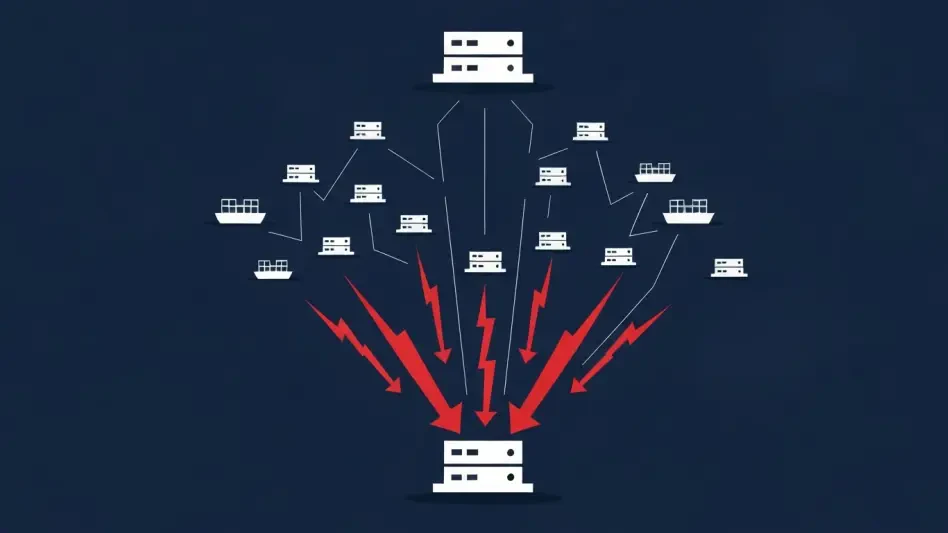In an alarming development, several U.S. government agencies were targeted by a sophisticated cyberattack campaign that exploited vulnerabilities in Microsoft’s on-premise SharePoint software. The breach, which came to light in late July, revealed a significant security lapse as cybercriminals managed to access sensitive systems undetected. Investigators discovered that the attacks leveraged three zero-day vulnerabilities recently disclosed, namely CVE-2025-49706, CVE-2025-49704, and a variant CVE-2025-53770. These flaws allowed hackers to infiltrate SharePoint systems without authorization, raising serious concerns about the robustness of existing cybersecurity measures. Microsoft has been working diligently to address these vulnerabilities, but the incident underscores the complexities of maintaining secure infrastructure amidst evolving cyber threats. Additional scrutiny has been cast on how such vulnerabilities were not identified sooner, especially given the critical nature of the platforms affected and the high-profile targets involved in these breaches.
The Attack and Its Impact
Two major federal entities, the National Nuclear Security Administration (NNSA) and the National Institutes of Health (NIH), were among the organizations impacted by this breach. The NNSA, tasked with overseeing the nation’s nuclear arsenal, reported no classified information was compromised, largely due to their advanced cybersecurity protocols and reliance on Microsoft’s M365 cloud services. Their quick and effective response played a crucial role in minimizing the attack’s damage. On the other hand, the NIH faced different challenges. One of its servers was breached, leading to significant concerns about potential data exposure. Fortunately, after thorough investigation, NIH officials asserted that no sensitive data was compromised, mitigating what could have been a severe security breach with far-reaching consequences.
These attacks, traced back by Microsoft to three hacking groups tied to China—Linen Typhoon, Violet Typhoon, and Storm-2603—have amplified the already tense geopolitical situation. These groups are notorious for targeting international governmental, educational, and business institutions, making them formidable adversaries in the cybersecurity landscape. In response to the breaches, swift action was initiated across the affected agencies to restore and fortify compromised systems. Microsoft promptly developed and issued patches to close the security gaps, helping prevent further exploitation of the identified vulnerabilities. This event has significantly raised awareness and urgency regarding cyber defense measures among U.S. government and industry leaders, emphasizing the need for constant vigilance and updated security strategies.
Examining the Challenges and Reactions
Beyond the immediate technical responses, this wave of cyberattacks has sparked broader discussions about the effectiveness of current cybersecurity frameworks both within federal agencies and Microsoft itself. The vulnerabilities exposed by these attacks have intensified scrutiny on Microsoft’s security protocols, particularly concerning on-premise software versions compared to their cloud-based solutions. Moreover, the inadequacies uncovered within the Cybersecurity and Infrastructure Security Agency (CISA) have raised questions, suggesting that existing budget constraints and staffing shortages may hinder effective defense against such complex cyber threats. There’s a growing consensus that bolstering CISA’s resources and capabilities is imperative to enhance national cybersecurity posture.
Meanwhile, the Chinese government has refuted allegations of its involvement in these cyberattacks, reaffirming its official position against hacking. Nevertheless, the potential implications of state-sponsored cyber espionage loom large, as crucial stakeholders examine how such breaches could affect not only national security but also international diplomatic relations. The increasing sophistication of cyber threats necessitates a collaborative approach involving both public and private sectors to develop comprehensive security solutions and share crucial intelligence. This incident highlights the pressing need to refine existing policies and foster innovation in cybersecurity technologies to safeguard critical infrastructure against near-future attacks.
Looking Forward
In a concerning turn of events, multiple U.S. government agencies have fallen victim to a sophisticated cyberattack campaign. This breach exploited vulnerabilities within Microsoft’s on-premise SharePoint software, causing significant worry about security lapses. Discovered in late July, it unveiled how cybercriminals managed to penetrate sensitive systems without detection. Investigators found the cyberattacks were built on three zero-day vulnerabilities, specifically CVE-2025-49706, CVE-2025-49704, and a variant CVE-2025-53770. These loopholes let hackers infiltrate SharePoint systems unauthorized, spotlighting the fragility of current cybersecurity defenses. Microsoft has been rigorously addressing these vulnerabilities; however, this incident highlights the intricate challenges in safeguarding infrastructure as cyber threats evolve. Additional questions arise about why these vulnerabilities weren’t identified sooner, given the critical nature of affected platforms and the prominence of the targeted entities in these breaches.








